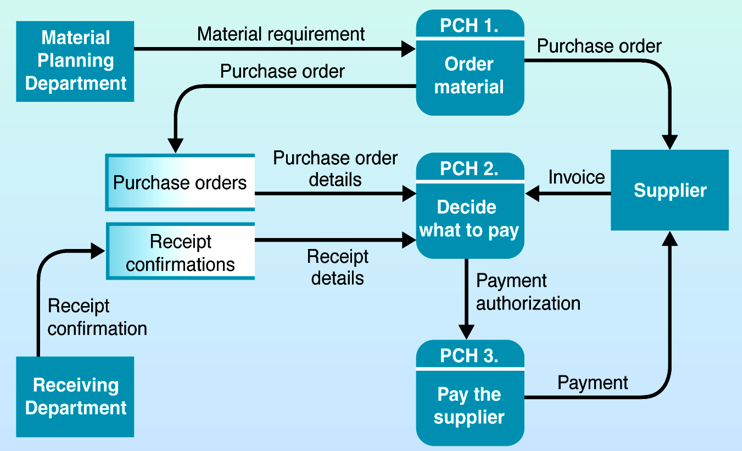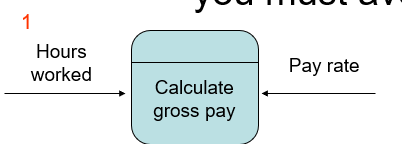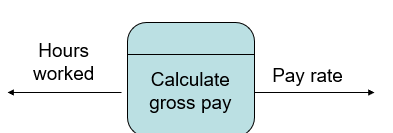Data flow diagram
1/10
There's no tags or description
Looks like no tags are added yet.
Name | Mastery | Learn | Test | Matching | Spaced |
|---|
No study sessions yet.
11 Terms
Initiation
Development
Implementation
Operation and Maintenance
4 phases of an information system

Process
transform inputs into outputs
represented by a rounded box
Describe as:
select
purchase
calculate
decide
adjust
hire
update
Represent either:
A whole system
A subsystem
Work being done, an activity
Names should be in the form verb-adjective-noun
The exception is a process that represents an entire system or subsystem

Data Flow
movement of data between:
processes
data stores
external entities
represented as arrows
data identified along the arrow
Shows the data about a person, place, or thing that moves through the system
Names should be a noun that describes the data moving through the system
Arrowhead indicates the flow direction
Use double headed-arrows
only when a process is reading data and updating the data on the same table or file

Data Store
location where data is stored
it can be:
file cabinet
diskette
hard disk
answering machine and etc
“where is the data?”
open rectangle
Name with a noun, describing the data
(answer) are usually given a unique reference number, such as D1, D2, D3
Include any data stored, such as:
A computer file or database
A transaction file
A set of tables
A manual file of records

External Entity
any person or organization that provided data to a process in the system or receives data from a process
square
Represent people or organizations outside of the system being studied
Shows the initial source and final recipient of data and information
Should be named with a noun, describing that entity

Context Level Data Flow Diagram
top-level data flow
Contains only one process, representing the entire system
The process is given the number zero
All external entities are shown on the context diagram as well as major data flow to and from them
The diagram does not contain any data stores

Diagram 0
is the explosion of the context level diagram
Should include up to 7 or 9 processes
Any more will result in a cluttered diagram
Processes are numbered with an integer
The major data stores and all external entities are included on (answer)

Child Diagram
A lower-level diagram may contain data stores not shown on the parent process, such as
A file containing a table of information (such as a tax table)
A file linking two processes on the child diagram
Minor data flow, such as an error line, may be included on a (answer)
Each process is numbered with the parent diagram number, a period, and a unique (answer) number
Examples are:
3.2 on Diagram 3, the (answer) 3
5.2.7 on Diagram 5.2, (answer) 5.2
On Diagram 3, the processes would be numbered 3.1, 3.2, 3.3 and so on

Black Hole
no output
not valid

Spontaneous Process
no input
not valid

Gray Hole
mali yung input or output
not valid
